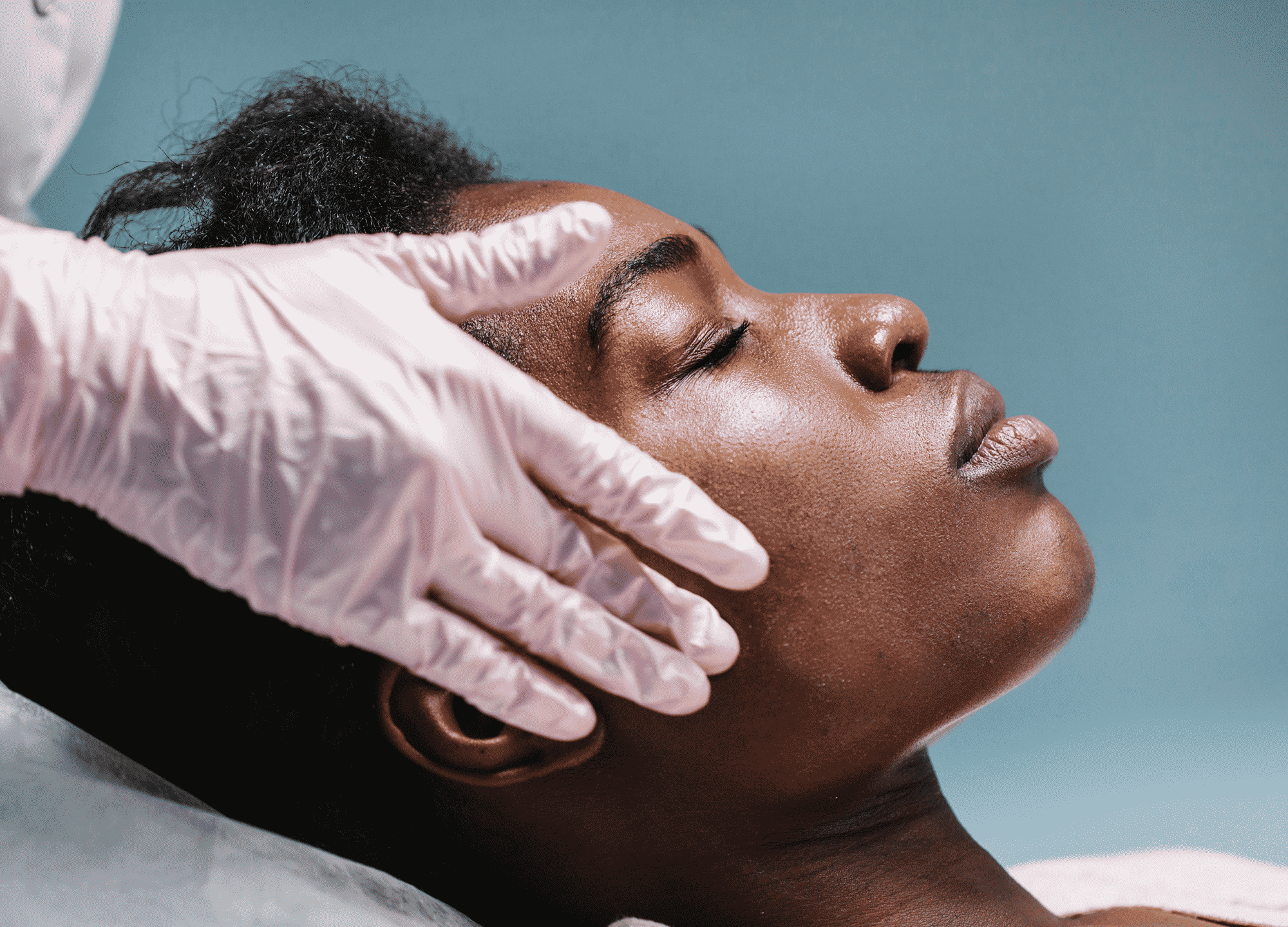Peels and lasers—they’re the tried-and-true, gold-standard procedures for treating hyperpigmentation, dullness, rough texture, and acne. They both help to reduce the appearance of pores and soften fine lines. Both require a series of treatments (at least two and, typically, three to six); require minimal downtime (a few days of redness, swelling, and peeling); and can be wildly effective.
“When I’m choosing which one to use, I look at a number of factors, including the patient’s skin type and their primary skin concerns. Am I treating melasma and fine lines? Acne? Does the patient have fair or deep skin? All these things will determine what kind of acid peel I’m using and the concentration or the type of resurfacing laser and the parameters to use,” says Dr. Michelle Henry, a board-certified dermatologist in New York City.
A chemical peel utilizes various acids such as lactic, salicylic, or trichloroacetic (TCA), to resurface the skin and remove surface pigmentation. Non-ablative fractionated lasers exfoliate by drilling hundreds of microscopic holes in the surface of the skin. “These are basically giving you a laser peel but working on a microscopic level,” says Dr. Heidi Waldorf, a board-certified dermatologist in Nanuet, New York. “Since they leave tiny areas of normal skin in between areas of treated skin, the skin isn’t scorched and you heal faster.”
Perhaps because high-tech lasers like Fraxel and Clear + Brilliant are more talked about and touted, traditional chemical peels may seem old-school—like comparing an iPhone to a landline. But that’s not really the case. Peels are far from passé, and they actually work better on some skin types and skin issues. Let’s break down chemical peels vs. lasers to help find the right treatment for you.
If you have dark skin: peel
“When we’re talking about resurfacing, a superficial peel is usually safer for skin of color,” says Dr. Henry. “The heat of a fractionated laser, delivered deep into the skin, can contribute to hyperpigmentation, so on average, I try to do peels first before jumping to a laser. On my patients with dark skin, I go low and slow, [meaning that I do] multiple treatments—typically three to six—but at low strength, to avoid postinflammatory hyperpigmentation [PIH].”
Related: Which Type of Chemical Peel Is Right for You?
If you have melasma: peel
“Melasma is such a persnickety condition that the heat from a laser can exacerbate it, so I always go with a series of peels,” says Dr. Henry. “Since a more aggressive peel increases the risk for PIH, I’ll apply 10% or less TCA on darker skin as opposed to 20% or 30%, which can be used safely on light skin types.”
If you want skin tightening: laser
Laser energy delivers heat deep into the skin, to help build collagen and elastin. “This heat effect creates a controlled wound that sets off a healing response in the skin and stimulates collagen production, which is what ultimately helps firm the skin over time,” says Dr. Waldorf.
If you’re on a budget: peel
Chemical peels are the easiest on your wallet, no contest. A peel ranges in price from $200 to $600 (depending on the strength and concentration), while a fractionated laser treatment typically starts at $800 and can go up to $2,000 per treatment.
If you have acne: both
Both Dr. Waldorf and Dr. Henry prefer to treat acne with a series of salicylic acid peels, which exfoliate the skin and penetrate into the pores to unclog them. “I also like to use the Aerolase 1064 laser, a long-pulse laser that works well on acne bacteria and helps to shut down overactive sebaceous glands too,” says Dr. Henry. “It’s safe on skin of color because it won’t burn the upper layers and create collateral damage like PIH.”
If you want more radiance: both
You’ll get excellent results from both options, but keep a few things in mind. If money is an issue, then a series of peels is a better choice. “With skin of color, a chemical peel would be my go-to for overall rejuvenation,” says Dr. Henry. “A lower-energy fractionated laser, like Clear + Brilliant, can be gentle enough for dark skin, but you really want to make sure to have this done [by] someone who has had a lot of experience using this laser on dark skin types.” Something else to keep in mind if you want a low-intensity laser treatment, like Clear + Brilliant: you will need a series in order to get the same results that one stronger laser resurfacing procedure can yield.











